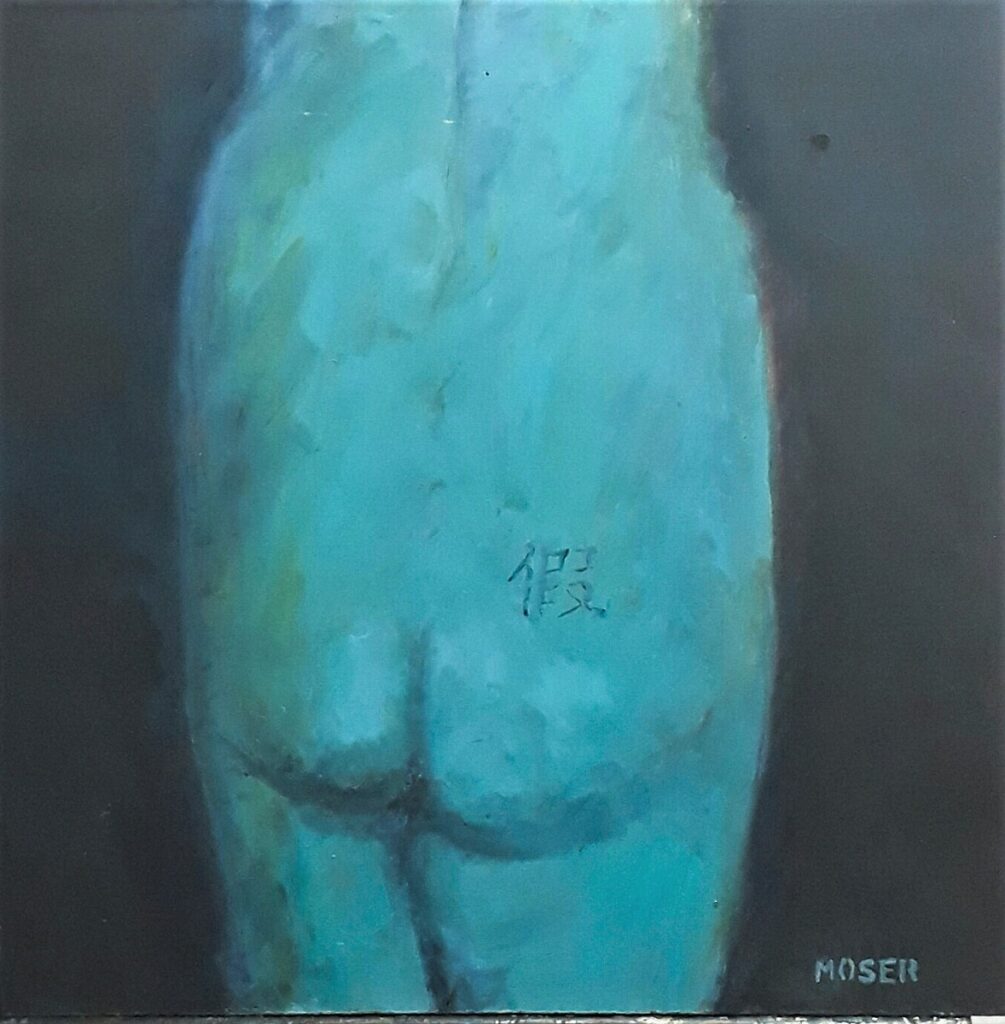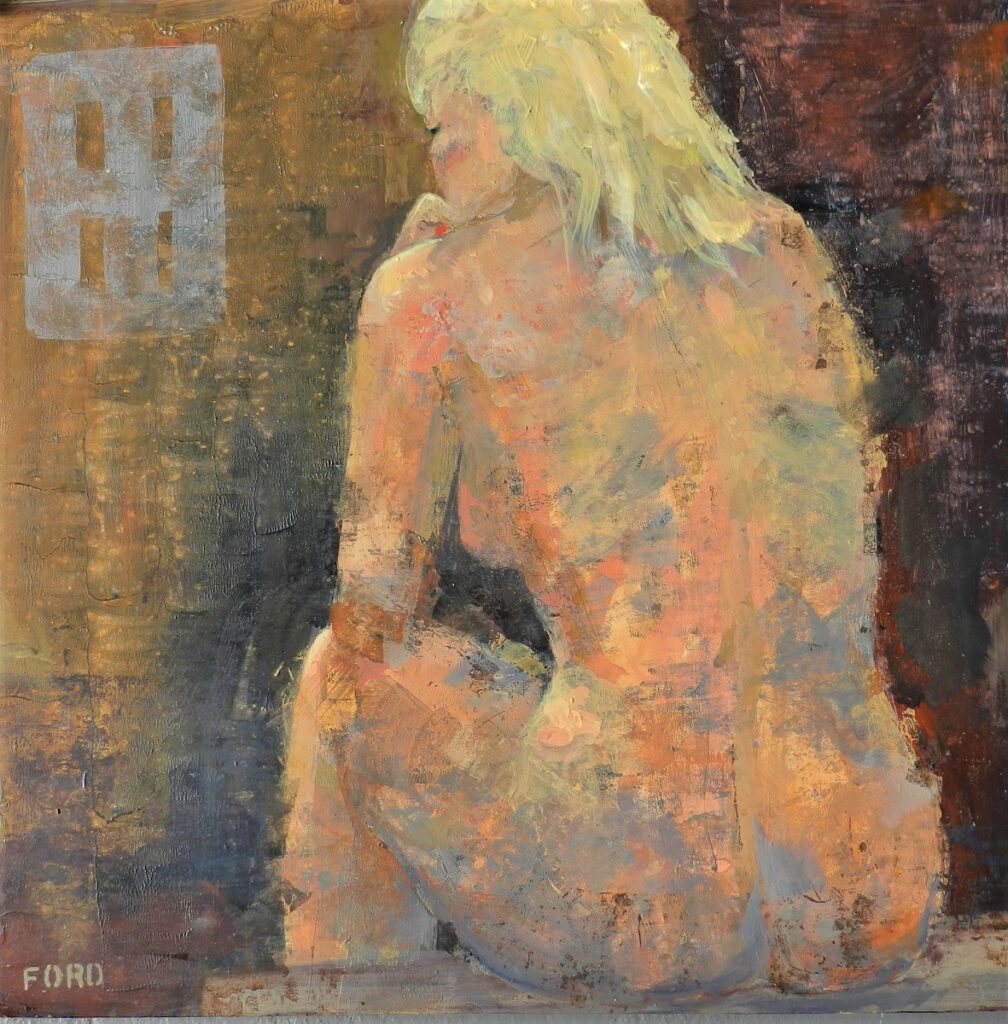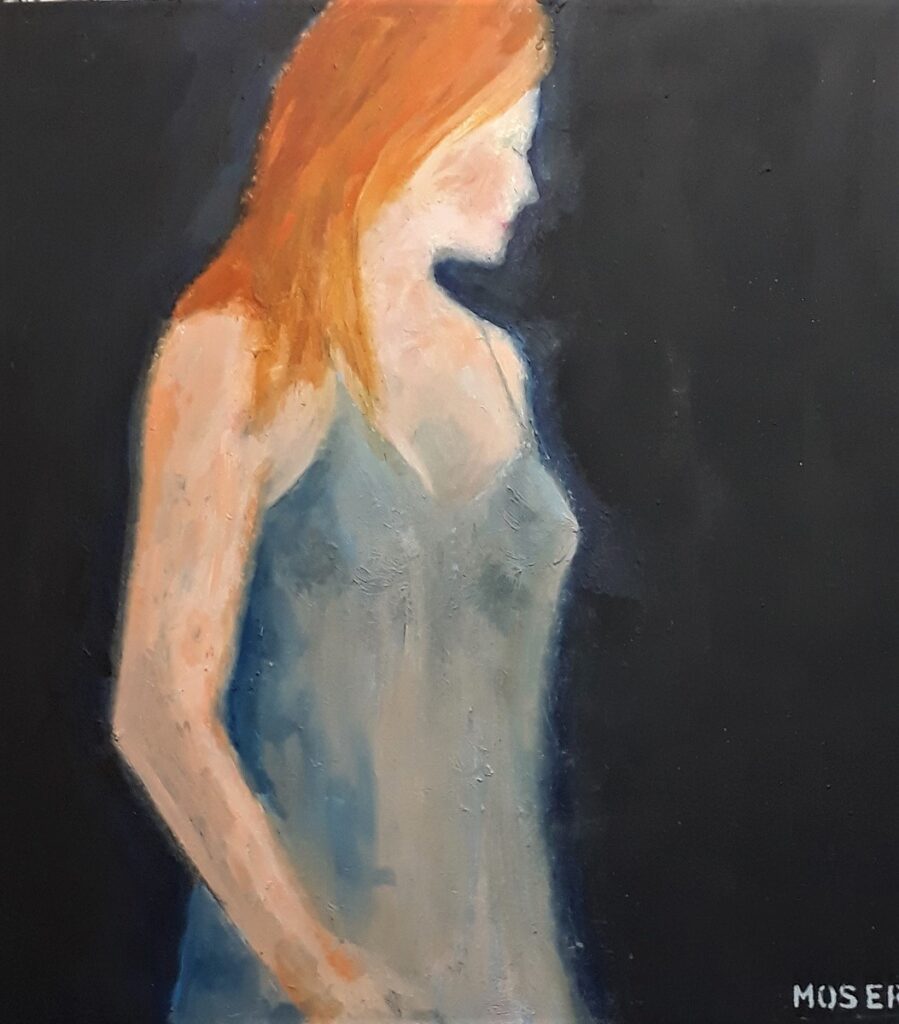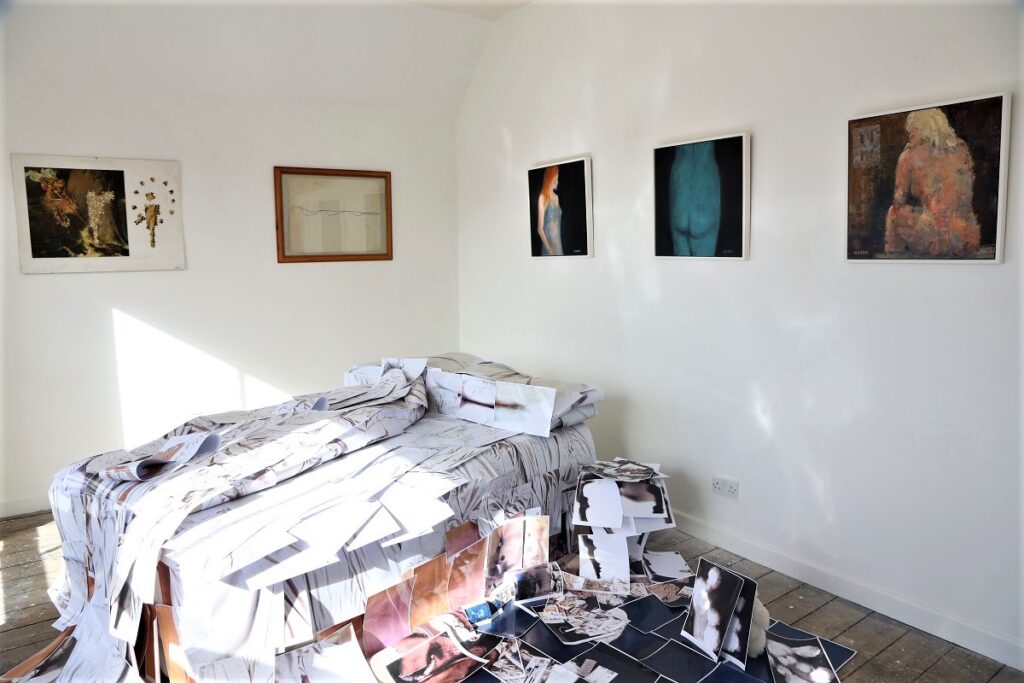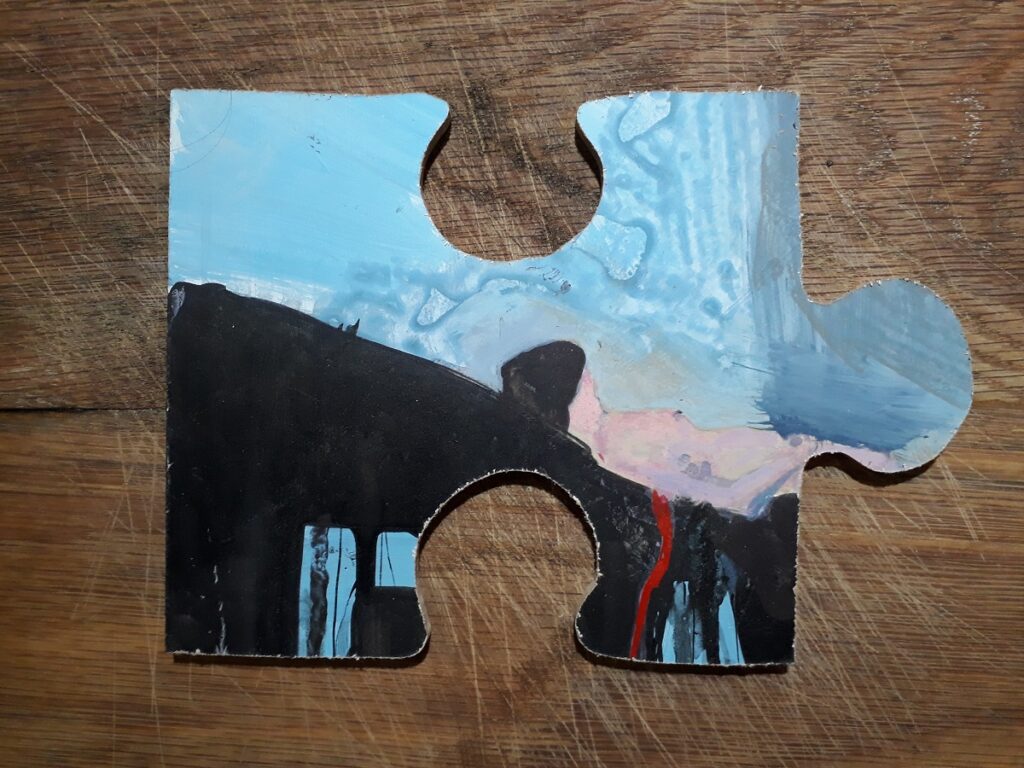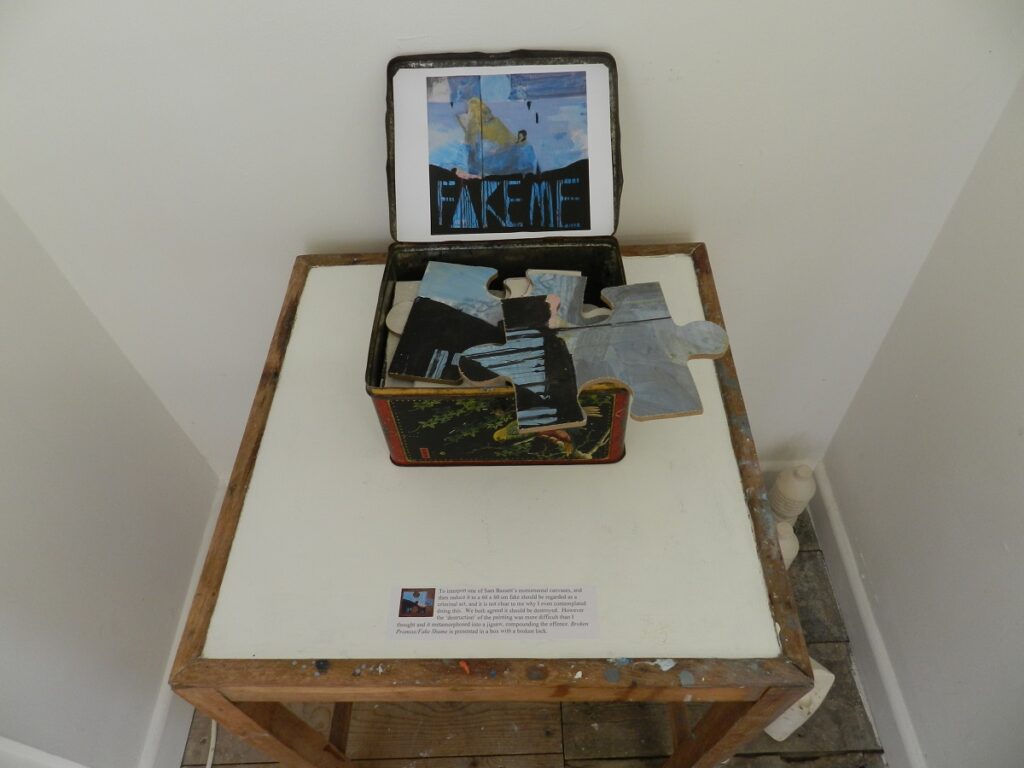My contribution to this exhibition explored the idea of fake art, by creating new works that, on the surface appear to be copies or appropriations, yet have a degree of authenticity.
Banksy
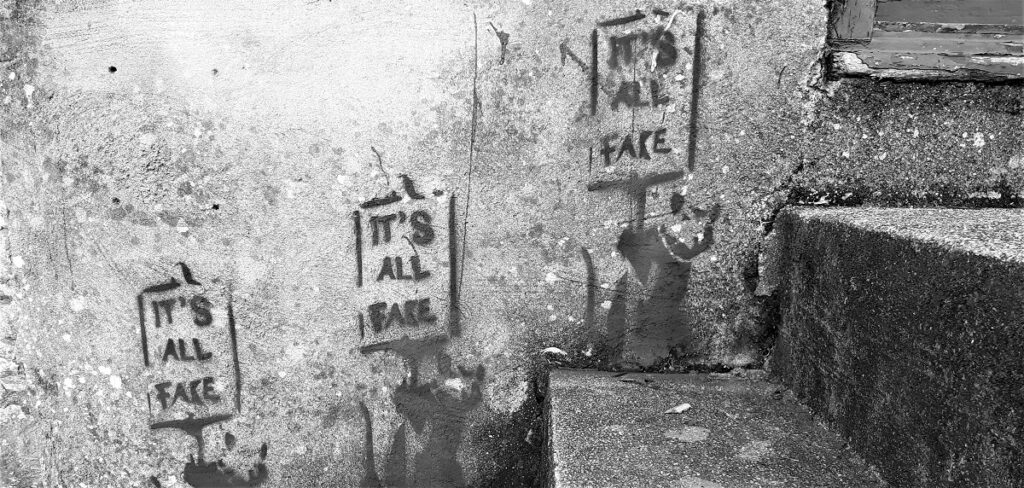
Banksy is an anonymous English street artist, political activist, and film director. His satirical street art and subversive epigrams combine dark humour with graffiti executed in a distinctive stenciling technique. Banksy displays his art on publicly visible surfaces such as walls and self-built physical prop pieces. Banksy’s public “installations” are regularly resold, often by removing the wall they were painted on.
The process of designing, making and installing a Banksy like image required a lot of research into his process and methods. I created a master stencil and sourced chalk spray, planning to install the work outside the gallery, in the middle of the night. Unfortunately I was spotted and my cover was blown. However the fake mini Banksy provided an amusing welcome to visitors to the exhibition, with the words ‘it’s all fake’.
Mark Rothko (1907-1970)
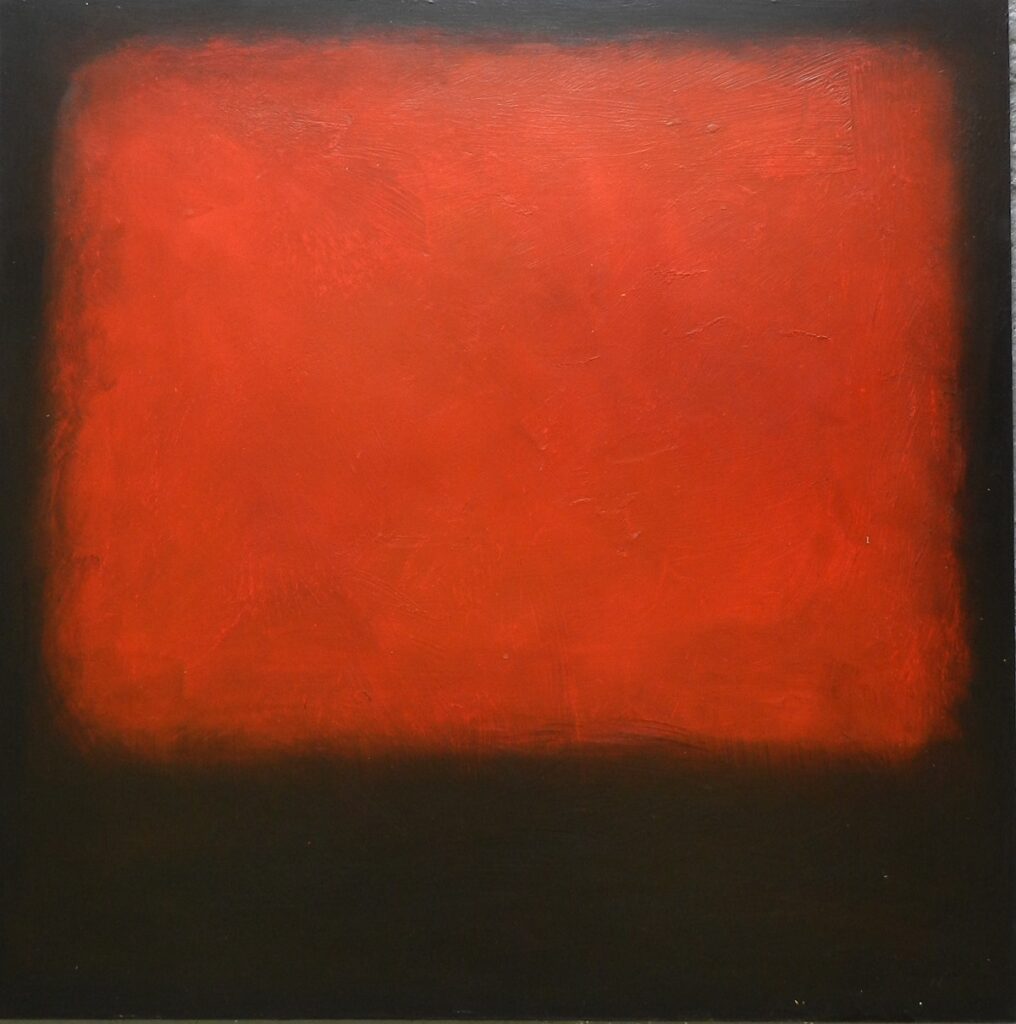
Born in Latvia and generally known as an abstract expressionist. Mark Rothko today has his place as one of the most important painters of post-World War II modernism. His radical refusal to copy nature reduced painting to large, vibrant fields of color. His works were a seminal influence on the development of monochrome painting.
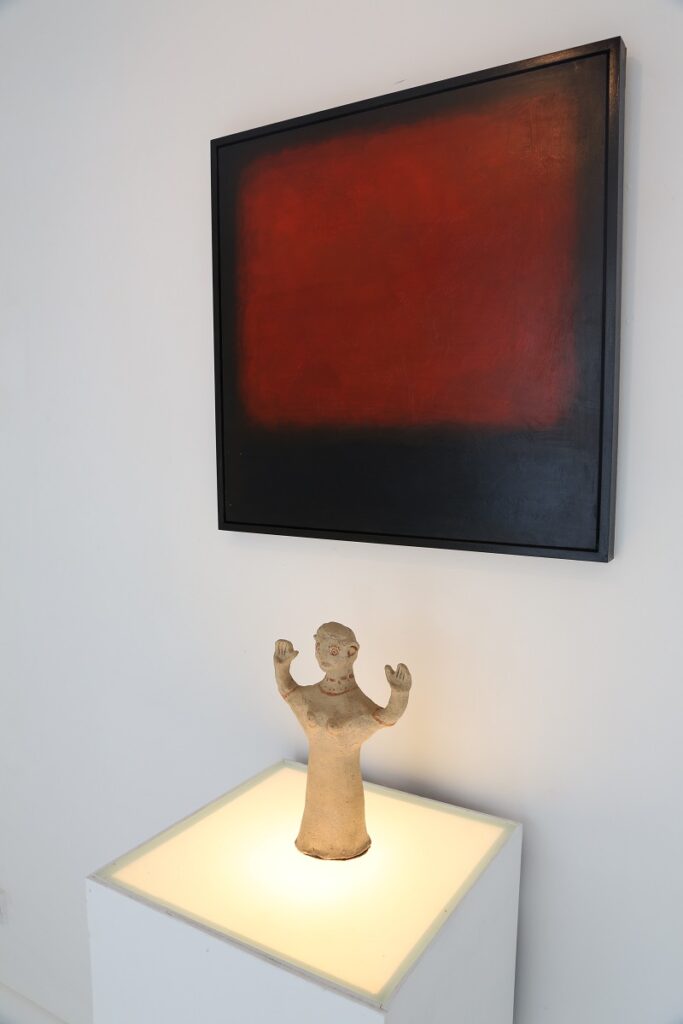
Exhibition Installation
It is impossible to fake Rothko’s monumental oil canvases, as I found out when creating a 60 x 60 cm fake using acrylic on board. However the insight into his working method and the technical difficulty was a revelation. The focus on surface quality has influenced my subsequent work.
Hung above Mary Fletcher’s fine sculpture.
Ad Reinhardt
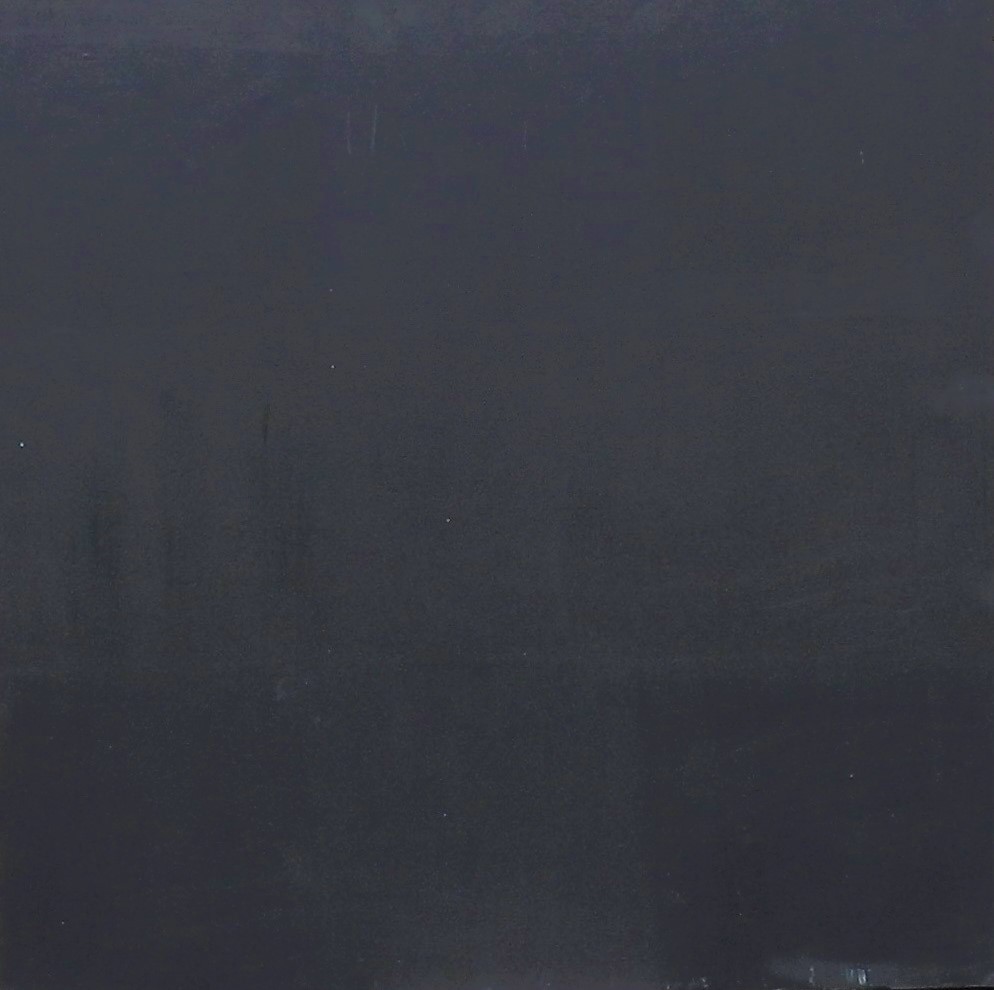
Abstract Expressionism
Ad Reinhardt was a member of the American Abstract Artists and was also a member of The Club, the meeting place for the New York School abstract expressionist artists during the 1940s and 1950s. He was a major influence on conceptual art, minimal art and monochrome painting. Most famous for his “black” or “ultimate” paintings, which he claimed to be painting the “last paintings” that anyone can paint.
It sounded like an easy task to make a fake black painting, but on closer examination, and with a bit of research into his painting methods, it seems his ‘Black’ paintings were not quite what they seemed. The canvas was divided into 9 equal squares. The corner squares were black with some red, the middle top and bottom were black with some green, and the middle square was black with some blue. This resulted in a painting in which, Reinhardt invites the viewer to contemplate the image carefully and with an open mind, when it may reveal itself to the viewer.
Reinhardt’s working methods
Reinhardt also advocated to some strict painting rules which were:
1. No texture.
2. No brushwork or calligraphy.
3. No sketching or drawing.
4. No forms.
5. No design.
6. No Colours
7. No light.
8. No space.
9. No time.
10. No size or scale.
11. No movement.
12. No object, no subject, no matter. No symbols, images or signs.
Creating a painting with no brushmarks, no texture, with his colour scheme proved technically difficult. However the end result was satisfactory and if visitors were able to look at the painting for long enough then the underlying colours revealed themselves.
I liked the publicity shot he did for his 1961 show and re-created it for the Fake show at CMR.
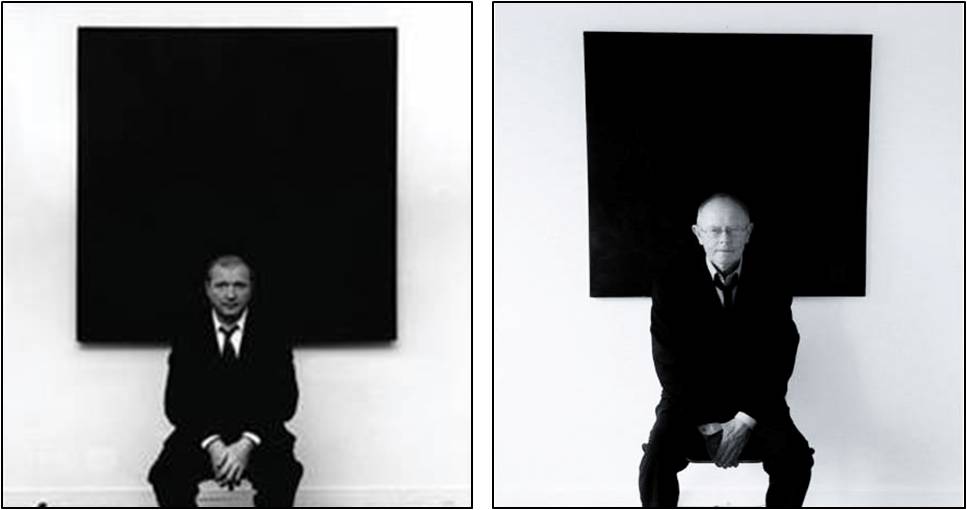
S C Moser
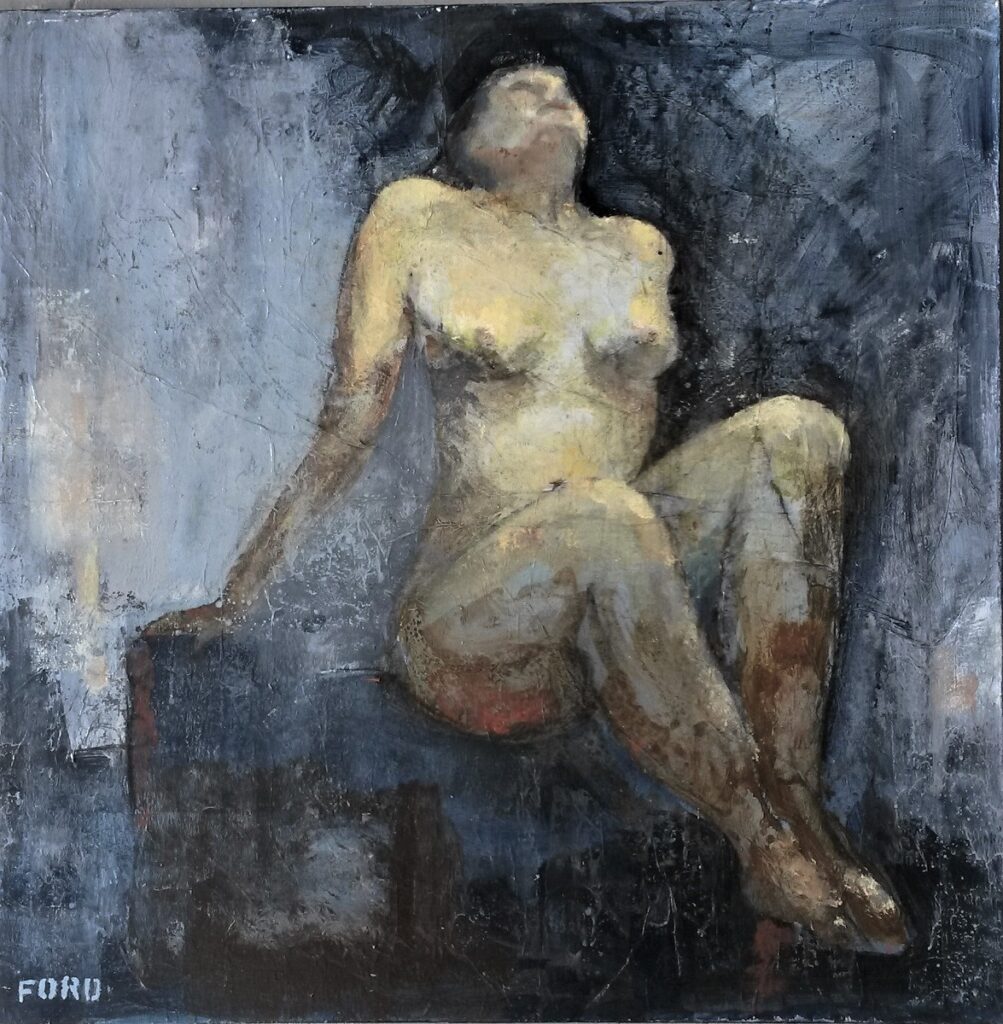
S C Moser is a French painter based in London. She is best known for figurative paintings which deal with provocative sexual and social themes. She often distorts or exaggerates the erotic forms of the female body, and says that her characters are reflections of herself rather than inspired by real people. It is unclear whether the tattoo in her painting Corps Bleu Prussien 2017, is genuine or a fake. Some say it is a Chinese character for the word Fake.
Sam Bassett
(broken promise/fake shame)
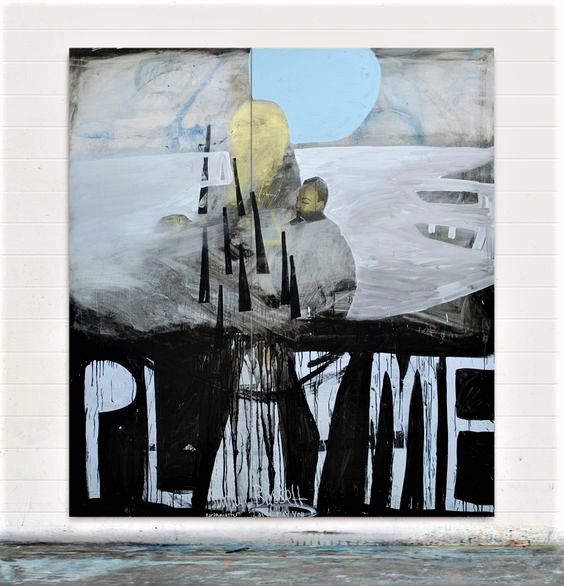
Sam Bassett is a contemporary Cornish painter with an international reputation. His work is often monumental in scale and personal in narrative. ‘Play me’ is one of his most well known works.
I met with him to gain his permission to show him my fake and we both agreed that it should be destroyed, and I agreed to consider how this should be done.
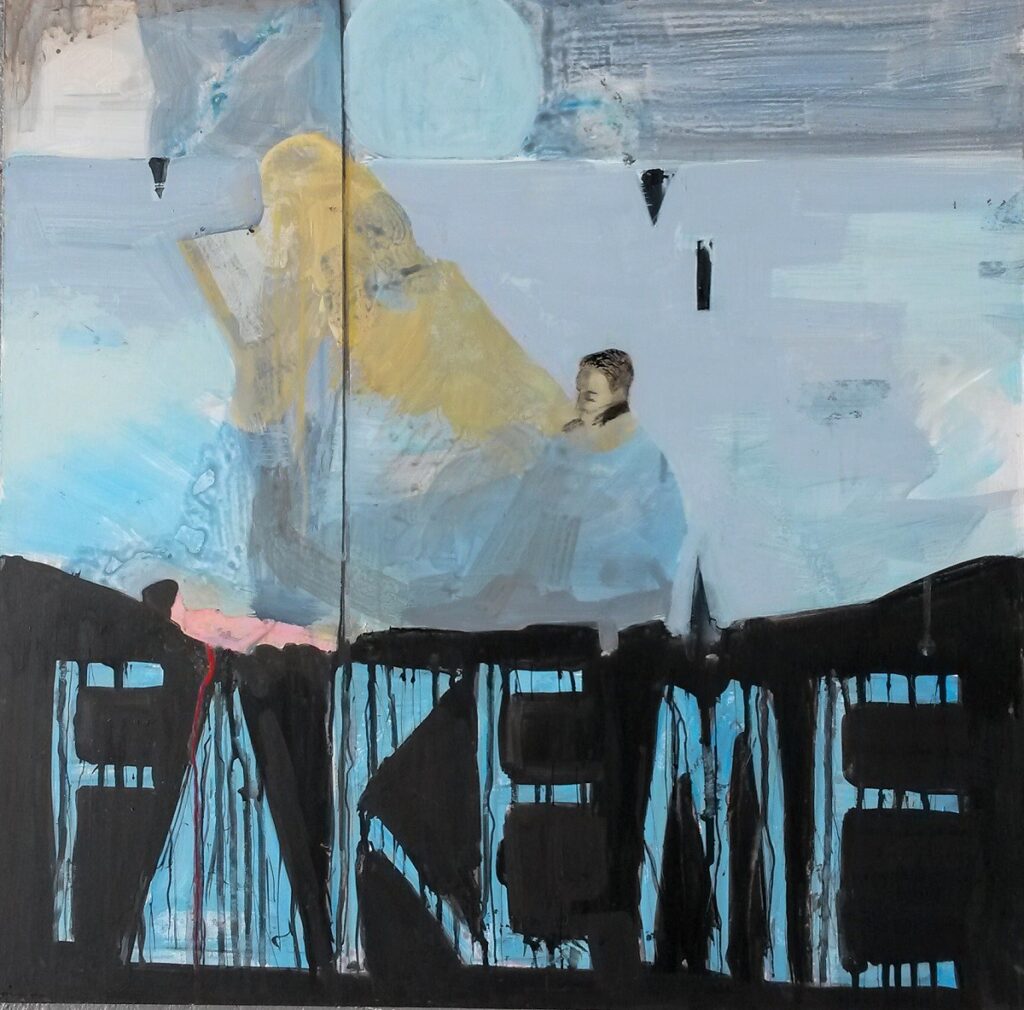
I cut the painting up to create a jigsaw and packed it in a box, and presented this box as ‘Broken promise/fake shame’, at the Fake exhibition. As it turned out it was very popular with under 10 year olds and over 50’s. I included the artists statement below.
‘To take one of Sam Bassett’s monumental canvases, and then reduce it to a 60 x 60 cm fake should be regarded as a folly, and an attack on his integrity, and it is not clear to me why I even contemplated doing this. Sam and I both agreed this was a bad idea, a poor painting and that it should be destroyed. However the ‘destruction’ of the painting was more difficult than I imagined. Turning it into a jigsaw honoured the letter of the agreement but probably not the spirit, which may well have compounded the offence’.
Robert Smithson
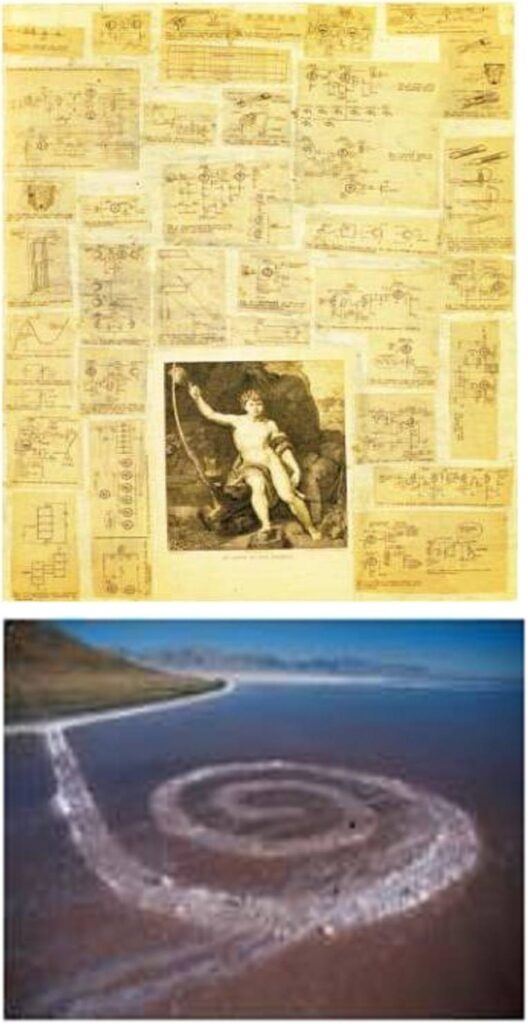
Robert Smithson was a visionary artist and a pioneer of Land Art. His earliest pieces were paintings and collages, but he soon came to focus on minimalist art of the early 1960s.
He is best known for his provocative earthwork, spiral Jetty, 1970, Great Salt Lake, Utah.
Smithson was also a writer and critic challenging traditional notions of contemporary art between 1964- 1973.
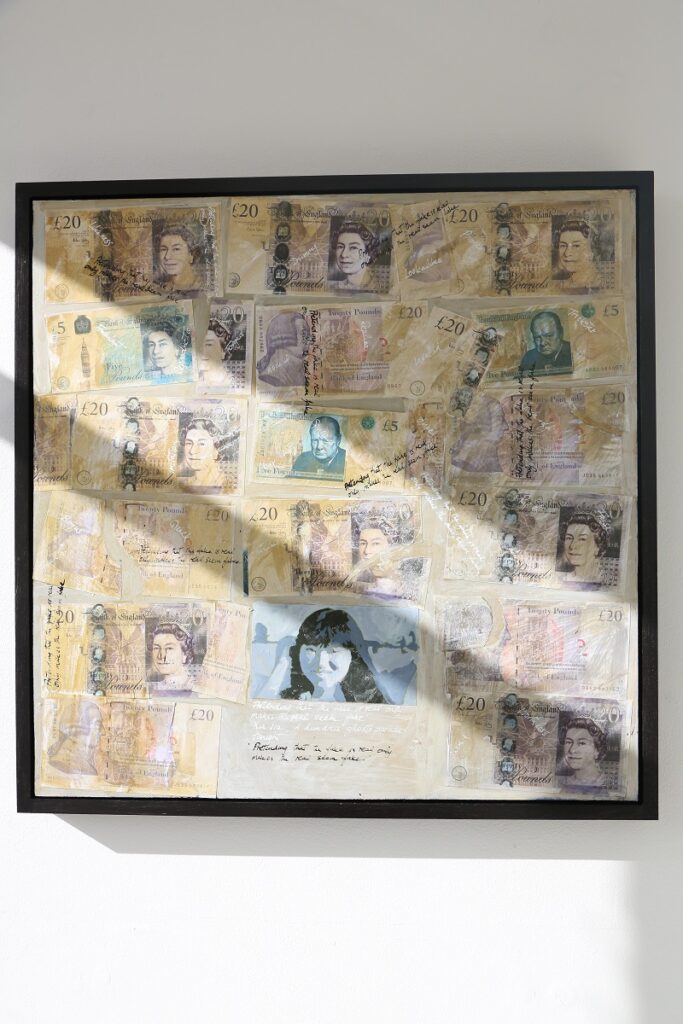
I chose Smithson’s St John in the Desert collage and decided to create a fake work that commented on the commercialisation of art and artists. Using his format I replaced the collaged newspaper clippings with £10 notes and the image with a picture of Xia Jia, a young science fiction writer who has received recognition very early in her career.
‘Pretending that fake is real makes the real seem fake’, is a quote from Xia Jia’s short story ‘A hundred Ghosts Parade Tonight’.
In my work I’m anticipating that the young Xia Jia will be subjected to the pressures of the commercial world following her success as an award winning science fiction writer at a very young age.
The collaged banknotes and repeated quote anticipate a creative life which may be threatened by the materialistic and commercial world of publishing.

